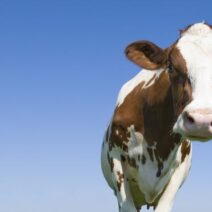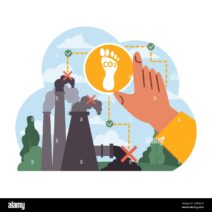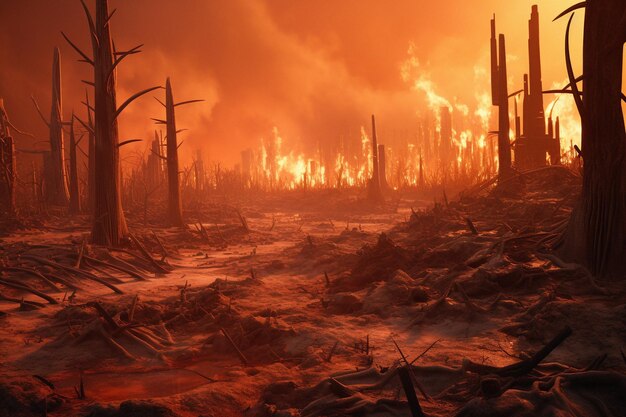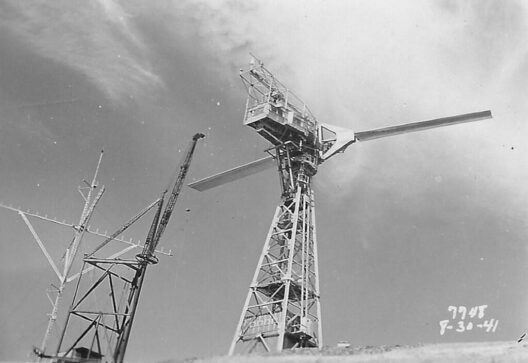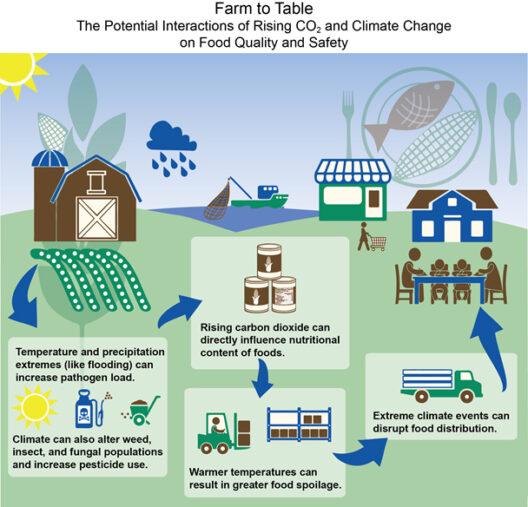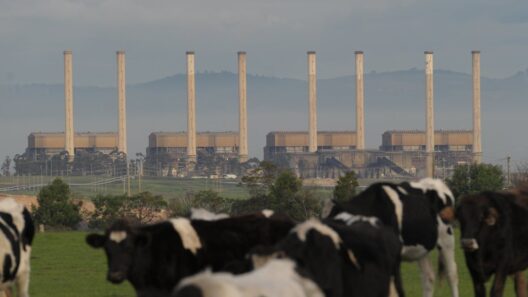Global warming is not merely an ambiguous threat looming in the distance—it is a pervasive force with tangible consequences. Among the far-reaching effects of rising temperatures, the exacerbation of soil erosion is a critical concern that demands attention. Lack of soil integrity does not merely compromise agricultural output; it poses a direct threat to ecosystems, biodiversity, and human livelihoods. Understanding the intricate link between global warming and erosion is crucial for combating these detrimental changes. This article delves into the dynamics of this relationship, exploring how warming temperatures accelerate soil loss and what that means for our world.
Understanding Erosion: More Than Just Loss of Soil
Erosion can be defined as the gradual wearing away of soil and rock from the Earth’s surface, primarily caused by natural elements such as wind, water, and ice. However, anthropogenic factors, exacerbated by climate change, elevate the risks associated with erosion to alarming levels. As global temperatures rise, we are witnessing not only the physical removal of soil but also the degradation of its quality, leading to unfavorable impacts on agriculture, water quality, and carbon storage.
Soil erosion is often overlooked in discussions about global warming, yet it presents a complex array of challenges. Healthy soil serves as a foundation for food production, acts as a filter for water, and is a carbon sink that mitigates climate change. When global temperatures raise, soil health diminishes due to increased rainfall intensity and prolonged droughts—both consequences of climate change. This duality leads to a corrosive cycle, where poor soil quality contributes to insufficient plant growth, facilitating further erosion.
Climate Change: A Catalyst for Deterioration
The linkage between climate change and soil erosion manifests in various forms, driven primarily by altered precipitation patterns and temperature fluctuations. An exploration of these facets reveals a troubling picture.
**Altered Precipitation Patterns**
In the quest to understand soil erosion, rainfall is a major player. As climate change leads to unpredictable weather patterns, the frequency and intensity of storms have surged. Heavy rainfall events dislodge soil particles, paving the way for erosion. Studies indicate that more intense storms result in faster and more severe erosion, especially on slopes or in areas devoid of vegetation.
Such convective storms can also lead to flash floods, which, coupled with soil saturation, can create mudslides and significant land degradation. In contrast, regions experiencing prolonged dry spells suffer from soil desiccation. Parched soil crumbles easily, rendering it more vulnerable to erosion when moisture finally arrives. This duality raises the stakes for agricultural resilience and food security.
**Temperature Fluctuations and Soil Biology**
Rising atmospheric temperatures impact not only the physical state of soil but also its biological life. Microbial communities within the soil play a pivotal role in maintaining its structure and fertility. Elevated temperatures can disrupt these communities, fostering conditions that lead to the breakdown of organic matter. As organic matter diminishes, soil structure deteriorates, leading to an uptick in erosion.
Moreover, increased soil temperatures can unleash a cascade of biochemical reactions. Enhanced microbial activity initially appears beneficial but can rapidly deplete soil nutrients, making it less resilient against erosion. Sustained high temperatures can also disrupt seasonal cycles, further complicating the symbiotic relationships that sustain soil health. Consequently, the susceptibility of soil to erosion increases drastically as the delicate balance within the ecosystem is disturbed.
Consequences of Erosion: Beyond the Immediate Impact
The ramifications of soil erosion extend far beyond the realms of agronomy. What happens when topsoil, the lifeblood of agriculture, washes away? A multitude of issues unfolds.
**Impact on Food Systems**
With an ever-growing global population, arable land must be protected to ensure food security. Erosion depletes topsoil, thus reducing agricultural productivity. The result is not merely less food; it is a crisis that engulfs farmers and consumers alike. Crop yields diminish, food prices soar, and in vulnerable regions, hunger becomes an imminent threat.
Furthermore, as farmers scramble to compensate for soil loss, they may resort to unsustainable practices that exacerbate the cycle of degradation. The reliance on chemical fertilizers can lead to nutrient runoff, exacerbating water quality issues and triggering dead zones in aquatic systems.
**Ecosystem Disruption and Biodiversity Loss**
Soil is not an isolated entity; it is interwoven with the ecosystem it supports. Erosion can strip habitats, threatening flora and fauna that depend on stable soil structures. The loss of specific plant species can trigger a domino effect, endangering various animal species within the food web. As biodiversity diminishes, ecosystems become less resilient to environmental changes, further exacerbating the effects of climate change.
Moreover, sedimentation caused by erosion can clog waterways, detracting from aquatic habitats and disrupting nutrient cycles. Clean water becomes a luxury, impacting both natural ecosystems and human communities.
Addressing the Challenge: Strategies for Mitigation
Confronting the challenges posed by global warming and soil erosion necessitates concerted efforts across multiple fronts. Adaptation and resilience are paramount.
**Implementing Sustainable Agricultural Practices**
Innovations in agricultural practices hold promise for combating soil erosion. Techniques such as contour farming, cover cropping, and agroforestry can enhance soil structure and mitigate erosion risks. These practices not only promote healthier soils but also contribute to carbon sequestration, aligning with broader climate goals.
**Enhancing Policy Frameworks**
Government policies must evolve to address the intertwined challenges of climate change and soil erosion. Incentivizing sustainable land management practices can encourage farmers to prioritize soil health. Funding for research and education will empower communities to adapt to changing climatic conditions more effectively.
**Raising Public Awareness**
Empowering communities through awareness initiatives can foster a holistic understanding of the relationship between global warming and soil erosion. Informed citizens are crucial for driving change, advocating for policies that protect both natural resources and food systems.
In conclusion, the relationship between rising temperatures and soil erosion is complex and intertwined. As global warming continues to progress, the health of our soils is in jeopardy, threatening food security, biodiversity, and even human survival. Armed with knowledge and innovative solutions, we can shape a future conducive to environmental stewardship, ensuring that the ground beneath our feet remains stable and fertile for generations to come.
